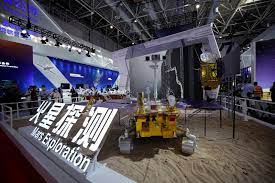BEIJING (Reuters): China’s fully robotic rover on Mars, in longer-than-expected hibernation since May 2022, likely met with excessive accumulation of sand and dust, its mission designer said, breaking months of silence about the status of the vehicle.
The motorised rover Zhurong, named after a mythical Chinese god of fire, was expected to have woken up in December after entering a planned sleep mode in May 2022 as falling solar radiation with the advent of winter cut its power generation.
An unforeseen pile-up of dust most likely affected power generation and Zhurong’s ability to wake up, Chinese state television reported on Tuesday, quoting Zhang Rongqiao, chief designer of China’s Mars exploration programme.
A camera on board a NASA probe orbiting Mars showed the Chinese rover had not moved since at least September, according to official images.
The 240-kg (530-pound) Zhurong, which has six scientific instruments including a high-resolution topography camera, was tasked with studying the planet’s surface soil and atmosphere after landing with no mishap in May 2021.
Powered by solar energy, Zhurong also looked for signs of ancient life, including any subsurface water and ice, using a ground-penetrating radar.
The rover had explored the Martian surface for 358 days and travelled for 1,921 metres (2,100 yards), Zhang said, far exceeding its original mission time-span of three months.
Aside from Zhurong, two other robotic rovers have been operating on Mars – NASA’s Perseverance and Curiosity, with the former roaming the planet’s surface for more than two years and the latter for over a decade.






